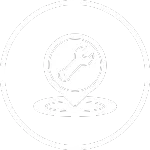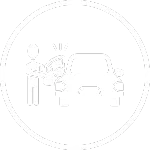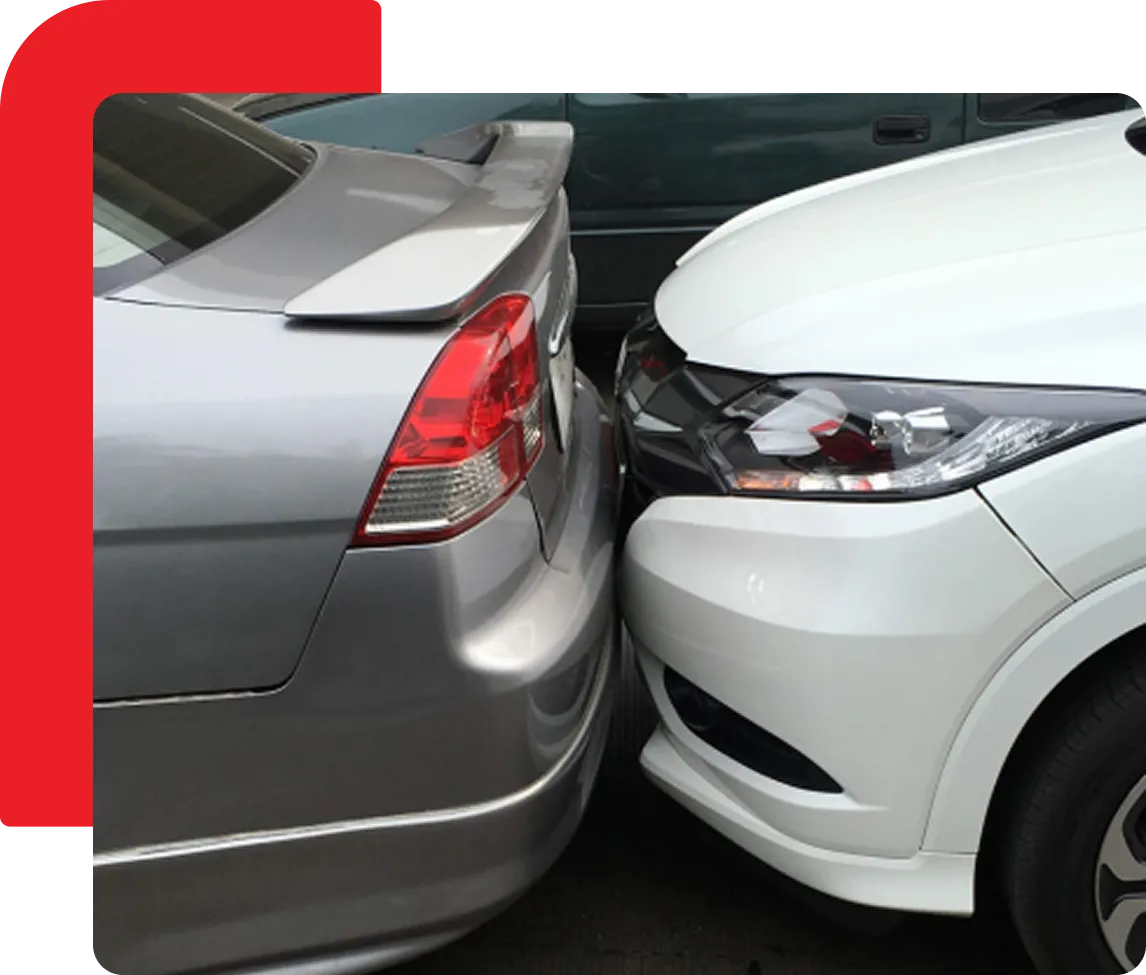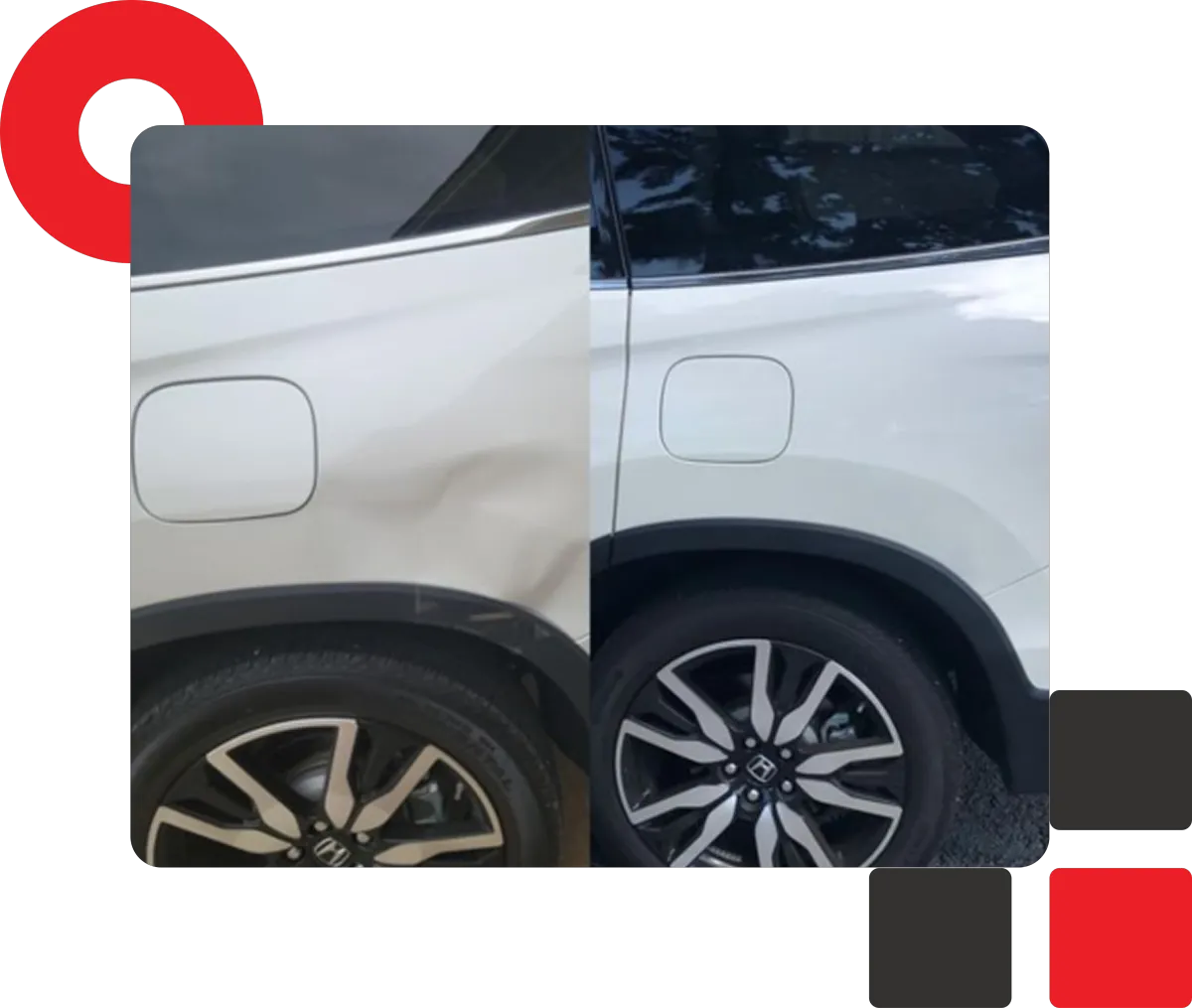Paintless Dent Repair
Understanding What Paintless Dent Repair Can Fix

FSDAVCFEBFEVSDDVFSD

FSDAVCFEBFEVSDDVFSD

FSDAVCFEBFEVSDDVFSD
What Makes a Dent a Good Candidate for PDR

Paintless dent repair is based on reshaping the metal from behind the panel without affecting the factory paint. But not every dent meets the conditions for this process. Size alone doesn’t determine eligibility. The depth, shape, and location of the dent all play a role in whether the repair will hold and remain invisible.
Five key factors determine if a dent qualifies for PDR: the size of the dent, how deep it is, whether the paint is intact, where it’s located on the panel, and if there’s tool access behind it. If the dent is near a reinforced edge, or if the paint is cracked or stretched, traditional body repair might be the better option. An experienced technician will check each factor before recommending a repair path

Common Types of Damage PDR Can Repair
Door dings are among the most frequent dents repaired with paintless dent repair. These usually come from parking lot incidents—another car door swinging open or a careless driver bumping their vehicle against yours. The dents are small, rounded, and shallow, and as long as the paint remains intact, they’re excellent candidates for PDR. Most occur on side panels and can be corrected without disrupting the original finish.
Hail damage PDR is another area where this technique shines. Hailstorms often leave vehicles with dozens of small dents scattered across the hood, roof, and trunk. These dents are generally uniform and shallow, with no paint damage. Because of that, PDR is often the fastest and cleanest way to repair them. Panels can be restored without the need for sanding, filler, or repainting.
Other common dents include low-speed impacts from shopping carts, ladders, or even bicycle handlebars. These impacts typically occur on flat sections like rear doors or quarter panels. As long as the metal isn’t stretched and the paint is undamaged, PDR is a reliable solution for these cases.

When PDR Isn’t the Right Solution
PDR does have limitations. When a dent includes cracked, chipped, or missing paint, it typically falls outside the scope of paintless dent repair. Since PDR doesn’t involve repainting or refinishing, any exposed metal or flaking clear coat means traditional body work is the more appropriate solution.
Another key limitation is metal stretch. Deep dents can stretch the panel beyond its ability to return to its original shape. This often happens in collisions or heavy impacts where the surface tension is permanently altered. While it might look minor at a glance, stretched metal cannot be properly corrected with PDR tools alone.
The dent’s location plays a role too. If the damage is on a sharp edge or a reinforced panel—like near a door seam or wheel arch—access becomes difficult or impossible. Even with advanced skills and lighting tools, these locations don’t allow enough behind-the-panel access to achieve a clean result through paintless dent repair.

At A+ Dent Medic, technicians take the time to explain every detail of the evaluation. If a dent is only partially repairable using PDR methods, we’ll let you know right away—before any work begins. In situations where body shop work would produce better results, we don’t pressure you. Instead, we’ll explain why PDR may not be the best fit and help guide you toward the proper solution for your vehicle’s condition.
Customers often ask, “Can PDR fix this dent?” When a dent doesn’t meet the typical criteria—such as having cracked paint, being on a sharp edge, or lacking backside access—we’ll walk you through the reasons. You won’t just hear a “yes” or “no”—you’ll see the factors that influence the outcome. Our goal is to make sure every customer fully understands how we reach a decision. It’s not just about results—it’s about being honest, transparent, and informative from the start.
How Technicians Evaluate Each Dent Before Repair
Evaluation begins with a light board or reflection panel. This specialized tool projects consistent light across the surface, revealing even the smallest distortions that standard lighting might miss. By adjusting the board’s position and viewing the panel from multiple angles, technicians can trace the full outline of the dent—defining its depth, width, and edges more accurately than with the naked eye.
Next, we inspect the paint. If the paint has any cracks, flaking, or bubbling, PDR is no longer a viable option. The technique requires fully intact paint to preserve the vehicle’s finish. We also examine how the metal reacts to pressure. Softer materials like aluminum may behave differently than steel, and stretched metal may resist a full return to shape. These observations guide the next steps in the process.
Tool access is a key factor. We evaluate whether we can reach behind the dent to perform the repair. Some panels—especially on newer models—have internal reinforcements or double walls that block access. If we can’t reach it, PDR won’t produce the results we’re aiming for.
Examples of Dent Repairs We Do Every Day
We repair dents from baseballs, shopping carts, and stray car doors every week. A baseball-sized ding on a front fender is a great example of what PDR can fix. As long as the paint remains intact and the panel can be accessed from behind, this type of damage is a perfect match for the technique.
Hail damage is another common reason customers come in. A truck hood covered in small, uniform dents—left behind by a passing storm—can usually be repaired in one session. Our hail damage PDR process targets each dent individually, restoring the panel without sanding or paint.
We also see a lot of shallow dents just below the side mirrors. These are often caused by another car door bumping into yours. Since the damage is minimal and usually on a flat section of the panel, PDR offers a fast and reliable repair without filler or repainting.


Not sure if your dent qualifies? A few clear photos can go a long way. Snap shots from different angles and send them by text or email—our team can often review them the same day. With good lighting and close-ups of the dent’s shape and location, we can usually tell if it meets PDR criteria. Most of the time, we can give you a yes or no within minutes and let you know if an in-person estimate is the next step.
You don’t have to make a trip to the shop just to find out your dent isn’t a match for paintless dent repair. We aim to make the process easy and transparent from the start. Whether it’s a small door ding or something more complex, we give you real answers quickly. No pressure, no confusion—just an honest assessment to help you decide what to do next.
Know Before You Book: Key Takeaways About PDR
Understanding what paintless dent repair can fix helps you make smart decisions. Ideal dents are shallow, with intact paint, and located away from sharp panel edges. These are the situations where PDR works best—restoring the original panel shape without disturbing the factory finish or requiring repainting.
Dents with cracked paint, sharp creases, or those on double-walled or heavily braced panels often fall outside the range of what PDR can handle. This doesn’t mean they can’t be fixed—it just means they may require body filler, sanding, or panel replacement. That’s when traditional body work becomes the better solution.
Timing makes a difference, too. Addressing damage early reduces the risk of corrosion or further cracking. Ask yourself: Is the paint chipped? Is the dent on an edge or brace? Can tools reach behind the panel? These questions help determine if PDR is the right fit. A+ Dent Medic always gives clear, honest assessments. If your dent qualifies, we’ll walk you through the process. If not, we’ll explain why—no pressure, just real answers.

A+ Dent Medic
Paintless Dent Repair & Hail Damage Repair
Stay Up-to-date With Our Content
Subscribe to learn more about our mission!
Stay Up-to-date With Our Content
Subscribe to learn more!
Contact Info
Service Hours
Social Media
Mon-Thur: 8:00 am – 5:00 pm
Friday: Appointment Only
Sat-Sun: Closed
Home
Services
Service Areas
Blog
About
Contact
Contact Info
Service Hours
Mon-Thur: 8:00 am – 5:00 pm
Friday: Appointment Only
Sat-Sun: Closed
Social Media

Licensed & Insured